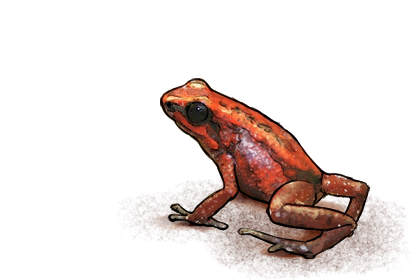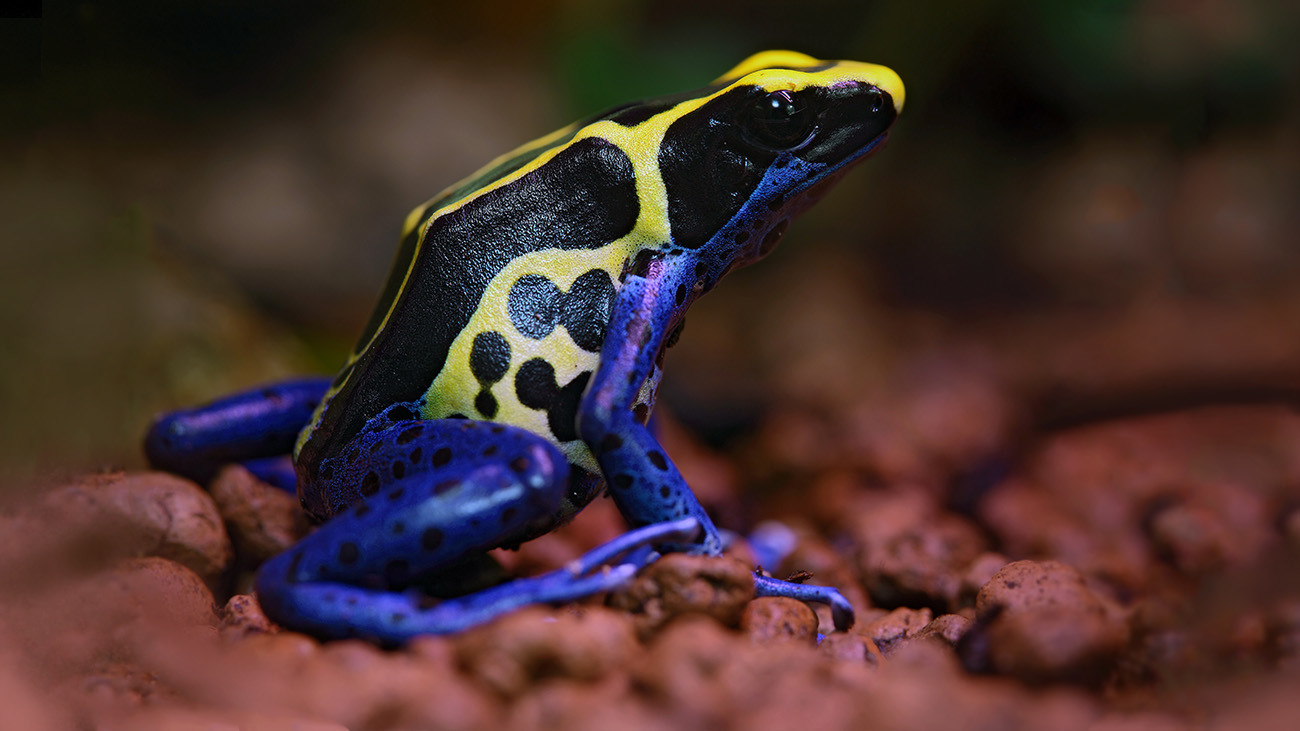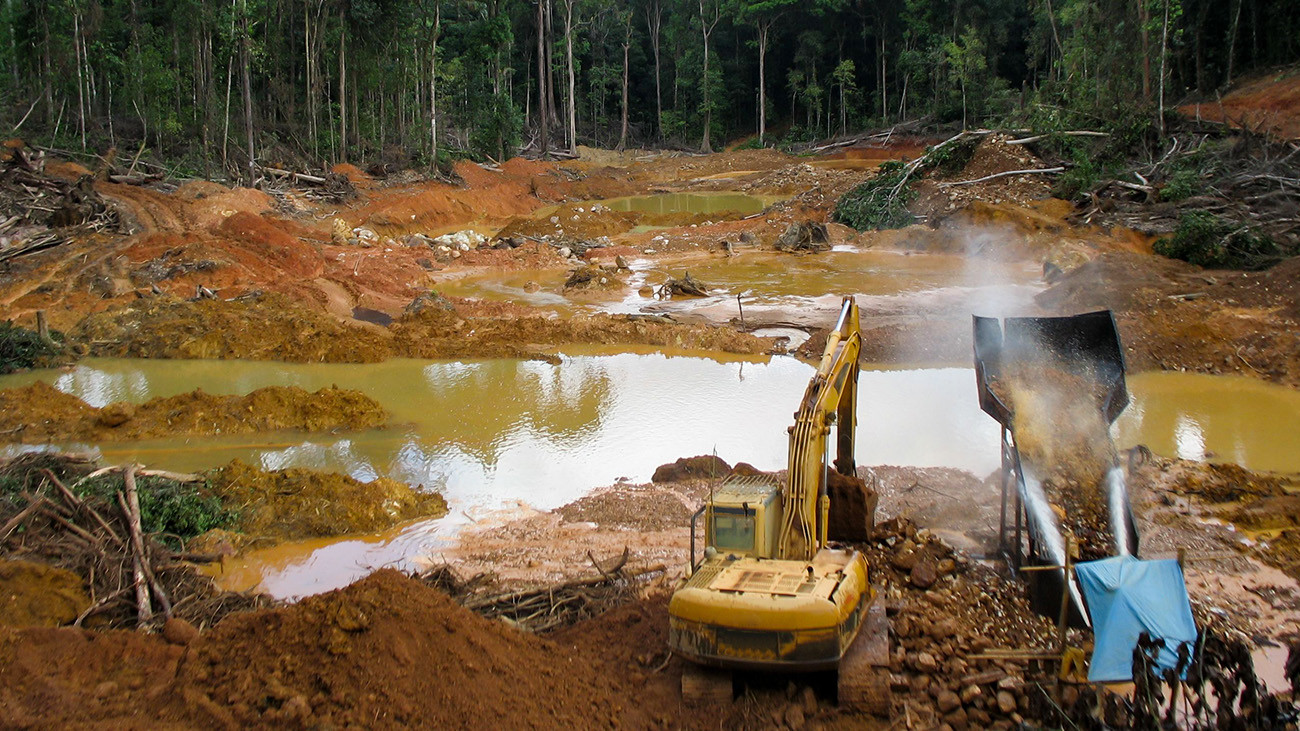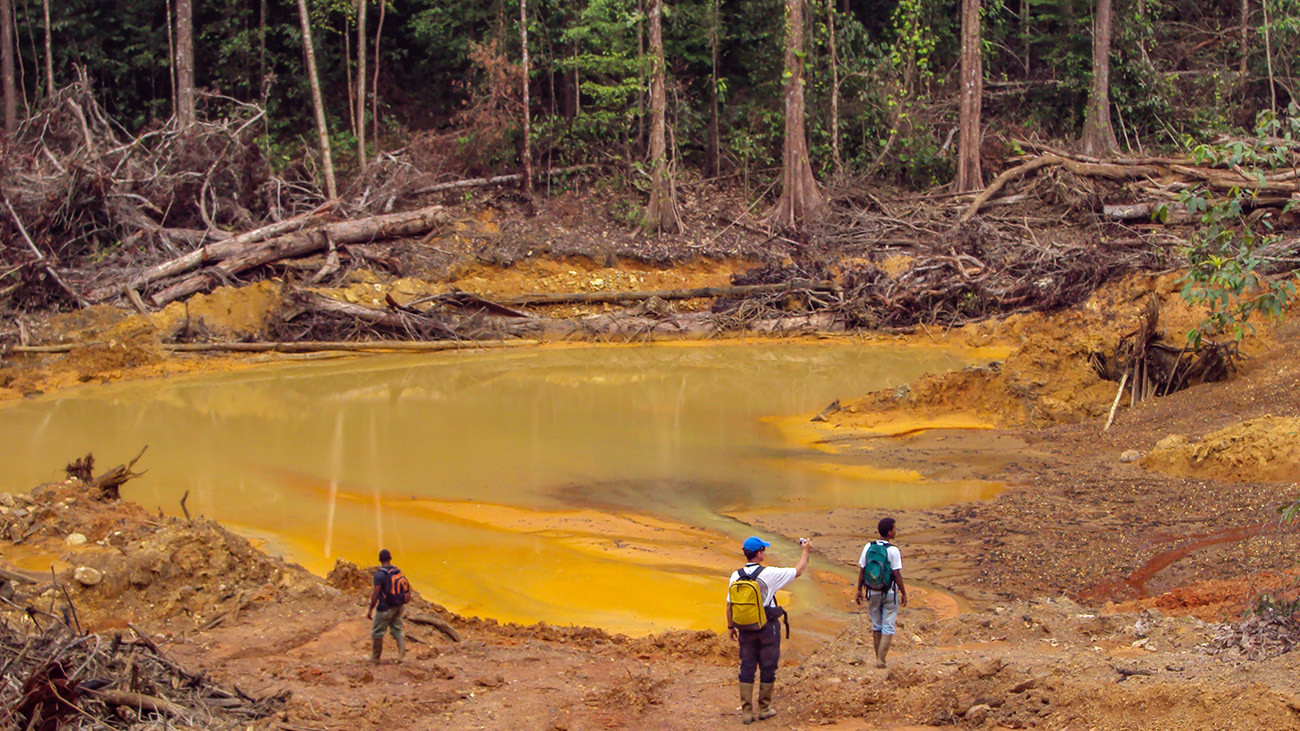Tafelberg-Baumsteiger
Minyobates steyermarki
Tafelberg-Baumsteiger
Minyobates steyermarki
Zielvorgabe CC
20 Haltende
Stand 05/2025
Zielvorgabe CC
110 Tiere
Stand 05/2025
Zielvorgabe CC
20 Haltende
Stand 05/2025
Zielvorgabe CC
110 Tiere
Stand 05/2025
„Lost World“, „die vergessene Welt“: 1912 veröffentlichte der berühmte britische Schriftsteller Sir Arthur Conan Doyle seinen Roman über eine Expedition auf einen Tafelberg im südamerikanischen Dschungel, so abgelegen, dass Dinosaurier darauf bis in unsere Tage überleben konnten. Tatsächlich erheben sich aus den Regenwaldebenen zwischen Orinoko und Amazons große, geheimnisvolle Tafelberge, die Tepuis. Auf einem von ihnen, dem Cerro Yapacana, haben zwar unseres Wissens keine Dinos überlebt – dafür aber ein kleines, rötlich schimmerndes Fröschlein, genetisch so außergewöhnlich, dass es innerhalb der großen Pfeilgiftfrosch-Verwandtschaft allein in einer eigenen Gattung steht.
Pfeilgiftfrösche als Beispiele für Warnfärbungen
Giftroter Winzling
Der Tafelberg-Baumsteiger ist ein echter Winzling. Er wird etwa 16 Millimeter lang. Vielmehr: sie. Männchen bleiben sogar noch etwas kleiner. Die Fröschlein zeigen auf rotem Grund schwarze Sprenkel und Flecken. Mit dieser Warnfärbung weisen sie auf ihr wirksames Hautgift hin, denn Tafelberg-Baumsteiger gehören zu den Pfeilgiftfröschen. Sie sind so giftig, dass sie bedenkenlos am helllichten Tag herumhüpfen können. Davon machen sie reichlich Gebrauch: In großer Dichte springen sie zwischen den in ihrem Wald üppig wachsenden Erdbromelien umher.
Bedrohung Bergbau
Alleinerziehende Väter
Die Erdbromelien, zwischen denen die Tafelberg-Baumsteiger leben, haben auch bei der Fortpflanzung eine besondere Bedeutung: Das Wasser, das in ihren Blattachseln steht, dient als Kinderstube der Kaulquappen. Doch da müssen sie erst einmal hingeschleppt werden. Paarung und Eiablage finden in einem feuchten Versteck im Gewirr des Waldes statt. Während die Larven in den Eiern heranreifen, passt der Vater auf, dass das Gelege nicht austrocknet. Bei Bedarf befeuchtet er es sogar. Wenn die Quappen dann schlüpfen, nimmt er sie eine nach der anderen einzeln auf den Rücken und trägt sie zu einem hübschen, kleinen Bromelien-Pool, in dem sie dann den Rest ihrer Larvenzeit verbringen.
Ein kleines, rötlich schimmerndes Fröschlein, genetisch so außergewöhnlich, dass es innerhalb der großen Pfeilgiftfrosch-Verwandtschaft allein in einer eigenen Gattung steht.
Tafelberg-Baumsteiger © Benny Trapp, Frogs & Friends
Spezialisten gefragt
Die Welt des Tafelberg-Baumsteigers ist gerade einmal zehn Quadratkilometer groß. Und leider keineswegs so vergessen wie Sir Conan Doyles Tepui: Am Cerro Yapacana wird nach Gold geschürft – im Tagebau. Dafür wird immer wieder Wald abgebrannt. Die bei der Goldsuche eingesetzten Chemikalien sind für die Frösche womöglich eine tickende Zeitbombe. Und die politische Krise in Venezuela erhöht die Gefahr illegaler Aktivitäten. Es ist deshalb höchste Zeit, dieses rote Unikat im Terrarium systematisch nachzuzüchten. Dass das funktionieren kann, haben Terrarianer in der Vergangenheit bereits beweisen. Die Fachleute von Citizen Conservation machen sich ans Werk. Keine leichte Aufgabe, denn die Fröschchen vermehren sich nur langsam, legen wenig Eier und sind nicht ganz leicht in der Haltung – ein Fall für engagierte Spezialisten.
Für Halter
Basisinformationen zu Biologie und Haltung
Der Tafelberg-Baumsteiger ist eine Art für fortgeschrittene Terrarianer*innen, die sich intensiv mit den Ansprüchen dieser Frösche auseinandersetzen wollen. Ausführliche Informationen finden Sie in unseren Haltungsempfehlungen.














